Last updated on
Fixing a door that slams open is simpler than you might think because this article provides a detailed, easy-to-follow method to restore your peace and serenity at home.
Door slamming open can be a nuisance, but worry not, the solution is simpler than you might think. This article will guide you through a straightforward process to rectify the issue, offering a step-by-step guide that will leave your door functioning as it should.
Whether it’s due to a faulty latch or an imbalance, we’ve got you covered. Read on to find a detailed discussion on the causes of door slamming and the best ways to fix it.
With the right tools and a little patience, you’ll be able to enjoy a peaceful, slam-free environment in no time.
Key takeaways:
- Door slamming open is caused by lack of friction or resistance.
- Inspect hinges, latch, frame, and air pressure changes.
- Replace faulty hinges one at a time to avoid door removal.
- Use doorstops to prevent slamming, choose from wedges or magnetic stops.
- Apply felt pads on doorframe to absorb impact and reduce noise.
Table of Contents
Understand Why Doors Slam Open and How to Address This Issue

Door slamming open can be a common problem, often caused by a lack of friction or resistance in the door mechanism. To tackle this, inspect the door’s components, starting with the hinges and latch. Are they loose or worn out? This could allow the door to move freely and lead to uncontrolled opening. Damage or warping to the door or frame can create an imbalance, leading to slamming. Air pressure changes, particularly in tightly sealed homes, can also force doors to slam open. Single out the problem and implement the solution range from straightforward hardware replacements to minor adjustments.
Inspect the Door Hinges for Potential Faults
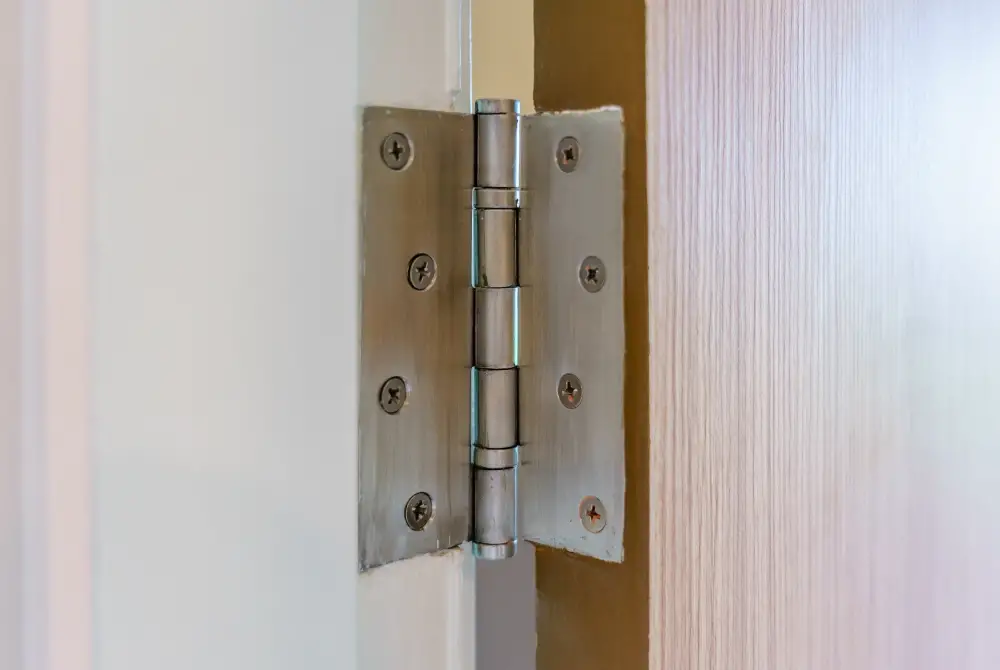
As you delve further into the inspection process, you’ll find door hinges play a pivotal role in the smooth functioning of a door. It’s quite typical for hinges to accumulate rust, gather grime, or gradually lose their alignment over time, compromising their effectiveness.
Here’s how to review the condition of your door hinges:
- Look for signs of rust: Check the hinge for any visible signs of oxidation. Rust can lead to the hinge’s stiffness, directly impacting the door’s motion.
- Check for accumulated grime: Dust and grime buildup in your door hinges can lead to their dysfunction. A simple wipe-down can often resolve the issue.
- Test alignment: Open and close your door a few times. If it sticks or squeaks, it’s often indicative of a hinge misalignment.
- Examine screws: Ensure all screws are tightly fastened and none are missing or stripped. Loose screws can cause the door to swing erratically.
- Look for damage: Certain damages, such as bending or breaking, are immediately noticeable. If your hinge appears damaged, a replacement could be necessary.
Remember, the objective is to ensure that your hinges are in optimal condition for the door to function properly. If you uncover any hurdles during this inspection, don’t worry! There are different solutions for each problem.
Replace Faulty Door Hinges One At a Time to Avoid Door Removal
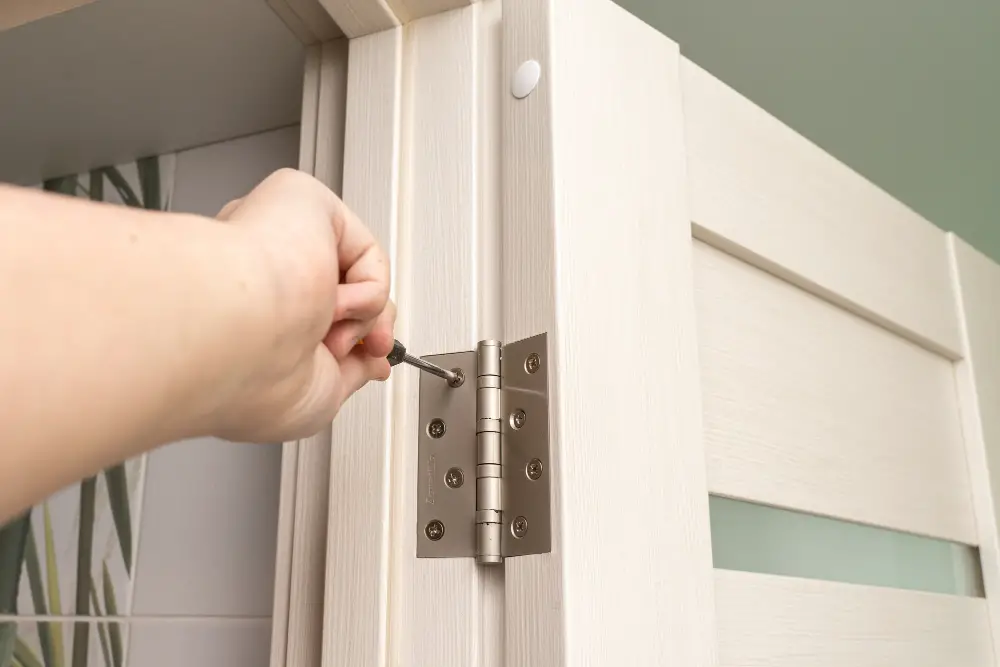
Ensure you have a new set of hinges handy before starting. Start on top – unscrew and take out the upper hinge. Replace it with a new one, ensure you secure it properly.
Then proceed to the middle hinge if there is one, and finally move to the lower hinge. This sequence mitigates the risk of the door falling off or changing position. By going one at a time, the door remains supported throughout the process.
Remember to tighten all screws and test the door several times after each hinge replacement to verify smooth functioning.
Use Doorstops to Control Doors From Slamming Open
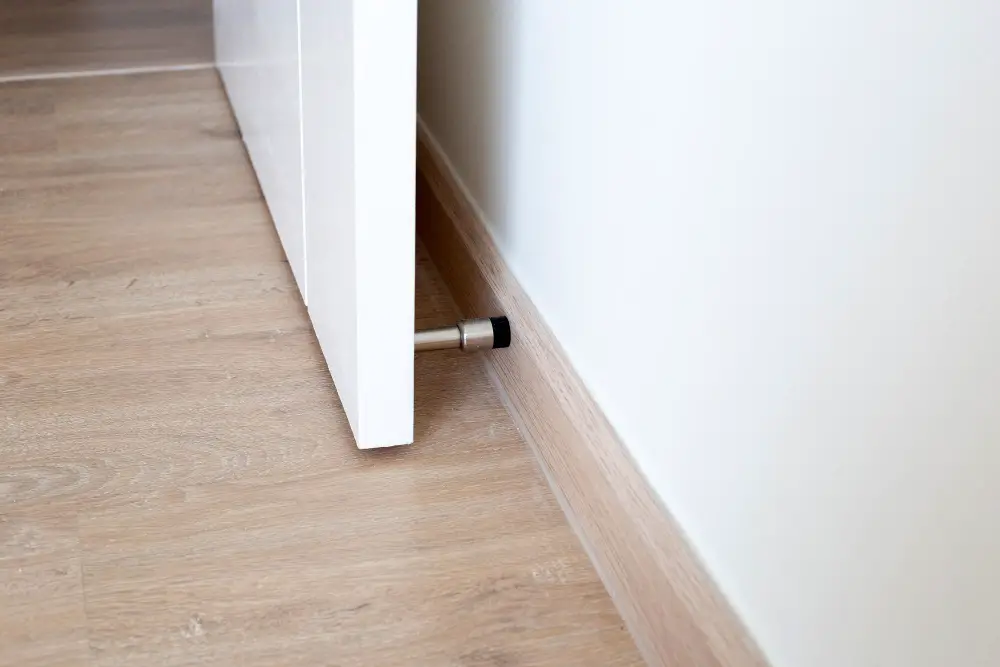
Doorstops can be a lifesaver when it comes to preventing doors from slamming open. They come in varied styles and materials – from simple rubber wedges to magnetic stops. To effectively utilize them, it’s essential to correctly position them based on your door’s specifics.
1. Wedge Doorstops: These affordable and easy-to-use options work best on hard surfaces. Simply wedge them under the edge of the door.
2. Magnetic Doorstops: A little elaborate to install, but these offer a hands-free solution. One piece is mounted on the door, and the other on the floor or wall. The magnet secures the door in place.
Remember, doorstops are not only functional but can add to your room aesthetics too, choose a design that complements your decor style!
Apply Felt Pads to Hinder Impact and Lessen Noise
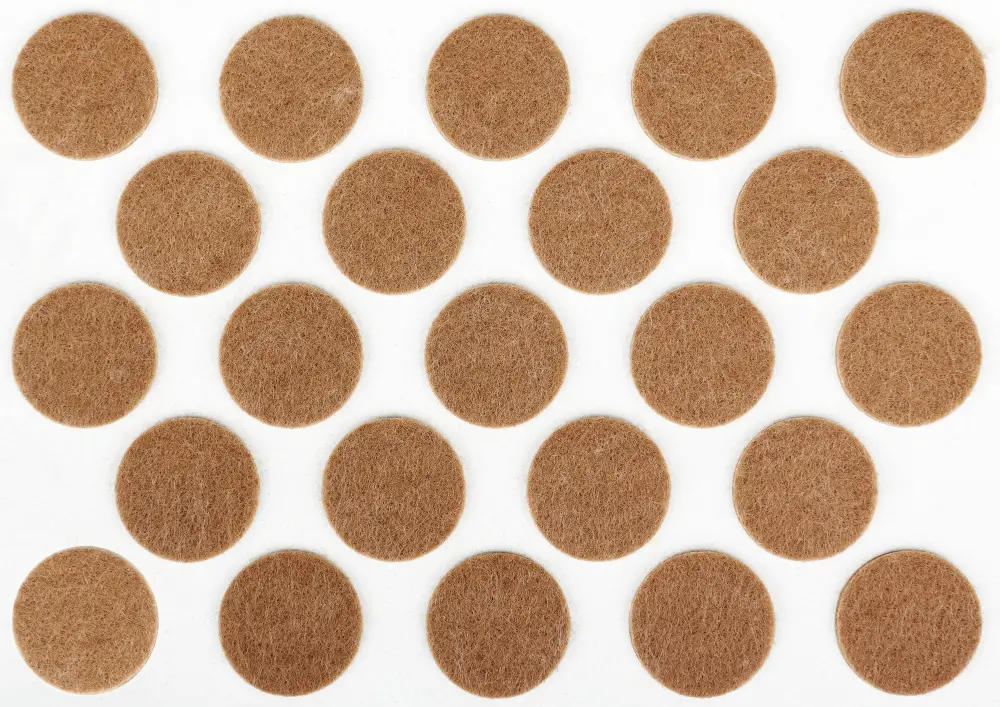
Felt pads, generally used for furniture, can also be an effective solution for doors that slam open. They work wonders by absorbing the impact and reducing the loud noise. All you need to do is secure the pads on the doorframe where the door makes contact. It’s advisable to use larger, thicker pads to maximally lessen the effect of the slamming. Remember, the color of the pads should be neutral or similar to the doorframe for aesthetics.
These pads are readily available in nearby hardware stores or online, and are simple to install. Just peel off the back and stick them where needed – no tools required. The adhesive is strong, ensuring they stay in place, but it’s smart to check periodically for wear and replace when necessary. The felt pads solution is not only cost-friendly, but also a quick and easy fix.
Incorporate Weather Stripping to Counteract Door Slamming
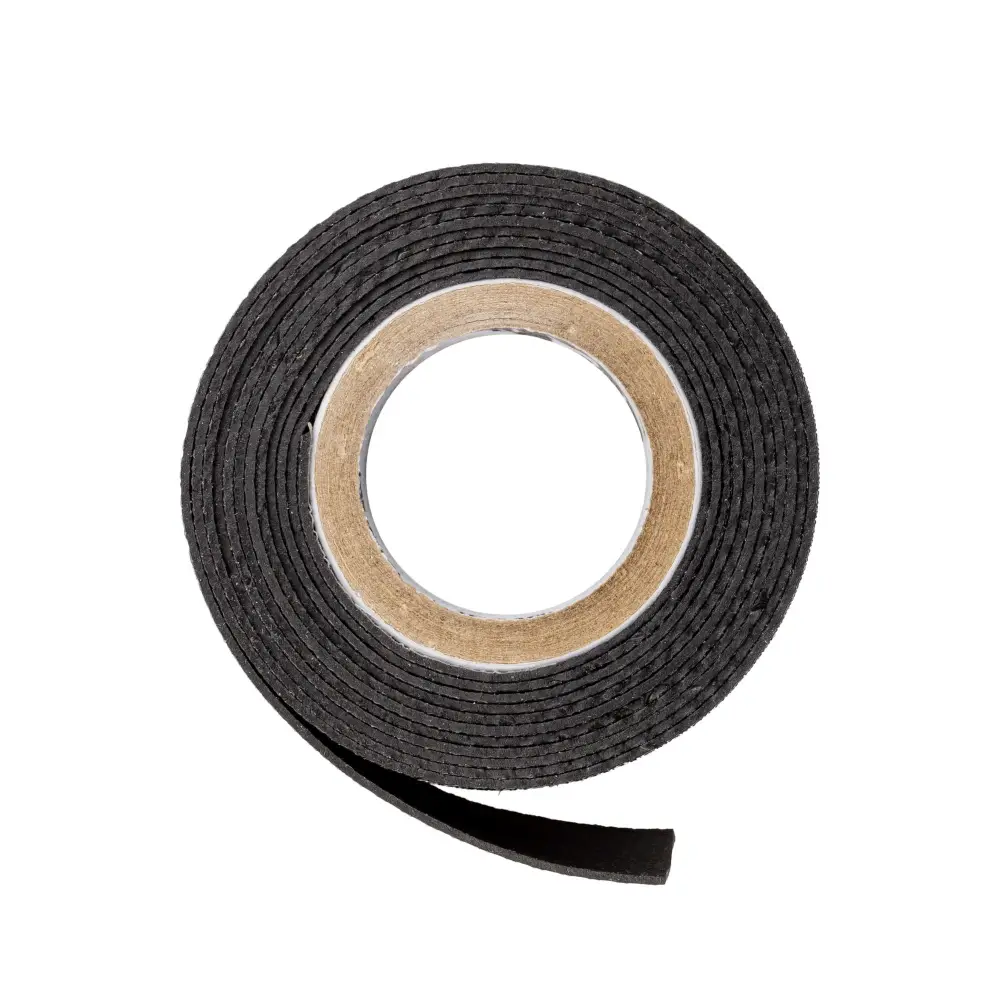
Weather stripping is a material often overlooked when dealing with door slamming issues. Not just for insulation, it also serves as a cushion that slows your door down before it bangs against the door frame.
Firstly, weather stripping is typically easy to install. It comes with a sticky adhesive on one side, so you only have to measure, cut and stick it onto the door frame. Remember to install it on all sides where the door makes contact with the frame for optimal results.
Secondly, its placement ensures direct contact with the door, thus reducing impact. However, be mindful of the thickness you choose. Too thick might prevent the door from closing completely.
Finally, different types of weather stripping are designed for specific uses. For instance, adhesive-backed foam tape or V-strip (tension seal) are best suited for this task.
In essence, weather stripping can act as an absorbent cushion, reducing the force of the door slam while maintaining your door’s functionality. It’s an effective, inexpensive and easy to implement solution.
Install a Pneumatic Door Closer to Regulate Door Movement
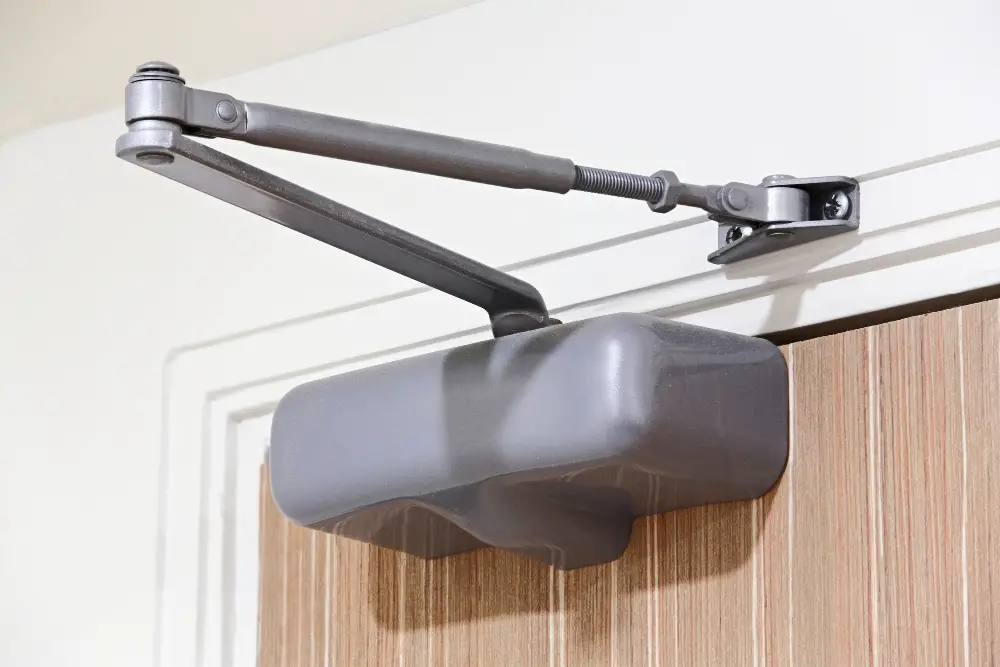
A pneumatic door closer offers a dynamic control mechanism, essentially self-closing the door, thus controlling any slamming. Effortlessly attached at the top of your door, they’re adjustable for speed to prevent abrupt swings. Though these devices are a bit on the pricier side, the investment is worthwhile for their efficiency.
Installation begins with securely fastening the closer’s body to the door frame, followed by attaching the arm to the door. Tools needed are commonly found in the home, such as a drill and screwdriver. For the optimal performance of your pneumatic door closer, ensure it’s set to match your door size and weight, which is typically indicated in the accompanying instruction manual. Remember to adjust both the swing speed and the latch speed for your own convenience and to prevent forceful openings.
This is a reliable and effective fix that not only hinders door slamming but also adds to the longevity of your doors by reducing the wear and tear induced by violent swings.
FAQ
Why does my door keep slamming shut?
The door may keep slamming shut due to worn-out hinges, and replacing them can resolve this issue.
Why does my door slam harder when I open the window?
Your door slams harder when you open the window because the wind entering the house through the open window seeks a path and, upon reaching the door, provides the force needed to slam it shut.
Why is my door closer not closing all the way?
Your door closer may not be closing all the way because it may be undersized for the door it’s installed on, implying it doesn’t have the required power to close the door completely.
What are some effective techniques to prevent doors from slamming shut?
Installing door closers, using felt pads, weatherstripping, door stops, or soft close hinge adapters are effective techniques to prevent doors from slamming shut.
What causes my door to swing open repeatedly despite being shut close?
The issue of a door swinging open repeatedly despite being shut close is often caused by an imbalanced door frame or unhinged door hardware.
How does air pressure impact the force with which the door slams when windows are opened?
Air pressure variations, triggered by open windows, can surge the force at which doors slam due to the rapid movement of air from high to low pressure areas.




